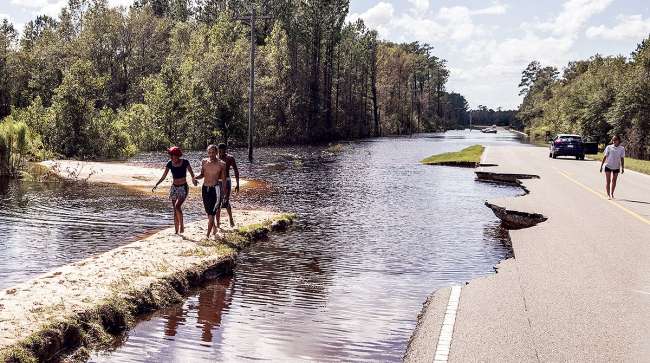Senior Reporter
Groups Propose Tweaks to FEMA Infrastructure Resilience Guidance

[Stay on top of transportation news: Get TTNews in your inbox.]
Stakeholders largely supportive of a new disaster mitigation program at the Federal Emergency Management Agency call for tweaking aspects of its proposed guidance.
FEMA sought comments this spring on its Building Resilient Infrastructure and Communities, or BRIC, program. The groups suggested the agency facilitate long-term planning, as well as partnerships with the private sector.
The American Society of Civil Engineers, for instance, encouraged the agency to continue to support widespread adoption and enforcement of up-to-date building and infrastructure codes as a way to plan with “policies that focus on long-term dividends rather than upfront costs,” the group indicated in a letter to the agency published in the Federal Register on May 11.
Gov Fema by Transport Topics on Scribd
ASCE also recommended FEMA consider facilitating industry and private sector expertise to states and localities partners as a way of increasing disaster resilience.
“The most impactful resilience projects will involve multiple strategic partners working together with public and private investment,” ASCE added. “BRIC will be able to take advantage of work already being done by government partners, the private sector and nonprofits, including best practices, lessons learned, training and education.”
Additionally, the National Ready Mixed Concrete Association proposed the agency continue incentivizing resilient construction of mitigation infrastructure, make available funding for affordable housing and prioritize performance-based specifications.
The group explained, “Performance-based specifications rather than prescription-based specifications will best achieve the resilience the program seeks to foster.”
Also, the National Wildlife Federation suggested FEMA require states and localities to rely on best-available science during the design of projects backed by the BRIC program.
“FEMA should either provide successful applicants with funding and technical assistance to develop their own risk data or help connect grantees to the relevant existing data and resources,” the federation said. “This will enable the agency to ensure that investments in mitigation projects are ‘future- proofed’ to account for increasing risks due to climate change and sea-level rise.”
Based on feedback from stakeholders, the agency indicated it might issue revisions to proposed guidance in the Federal Register. FEMA is expected to announce available funding for the BRIC program later this year. The program’s funding derives from a 6% set-aside from disaster grants.
FEMA shares information through an annual notice of funding opportunity, which includes details about application dates, funding amounts and allowances, codes and standards activities. It also includes sample project types, application review process, method for determining cost-effectiveness and award administration information.
Since it was established in 2018 via the enactment of the Disaster Recovery Reform Act, BRIC has sought to incentivize innovative infrastructure projects that have the ability to withstand severe weather events.

Gaynor
In March, FEMA Administrator Pete Gaynor said the agency had been implementing the grant program, which he emphasized would continue to provide consistent investments in preparedness. He had appeared before the House Economic Development, Public Buildings and Emergency Management Subcommittee.
“Experience has demonstrated that one of the most effective ways to support FEMA’s mission is by building a culture of preparedness before disasters take place. Developing resilient communities reduces both loss of life and economic disruption,” Gaynor told the transportation policymakers. “This year, FEMA was able to make $250 million available through BRIC to support pre-disaster mitigation programs designed to protect community lifelines and build more resilient infrastructure.”
Subcommittee Chairwoman Dina Titus (D-Nevada) told Gaynor she appreciated his focus on the provisions in the Disaster Recovery Reform Act “not only for the well-being of our people in times of disaster, but for the resilience of our public buildings and private homes.”
“In the wake of disaster,” she said, “we should be building back better than what existed before.”
Want more news? Listen to today's daily briefing:




